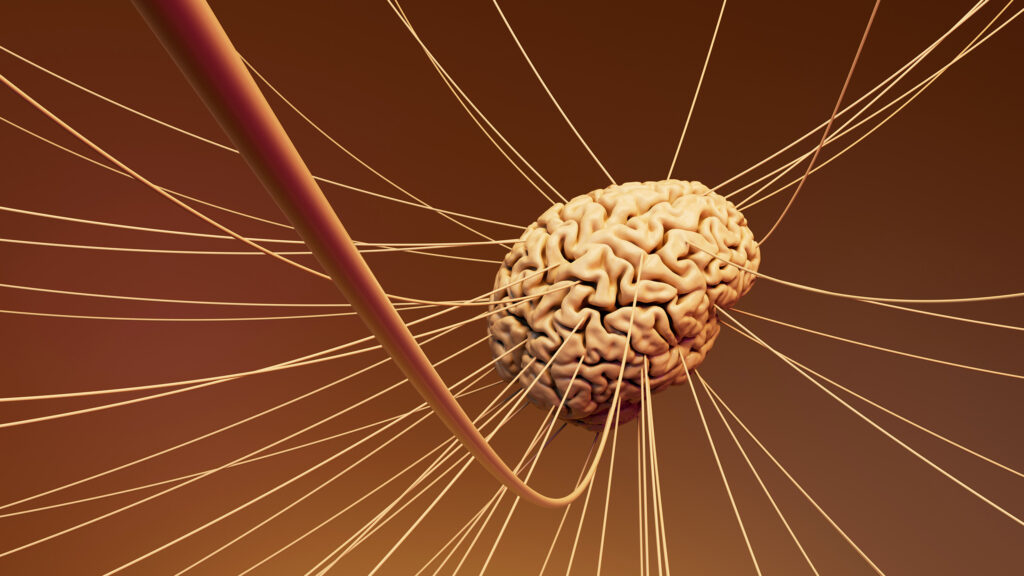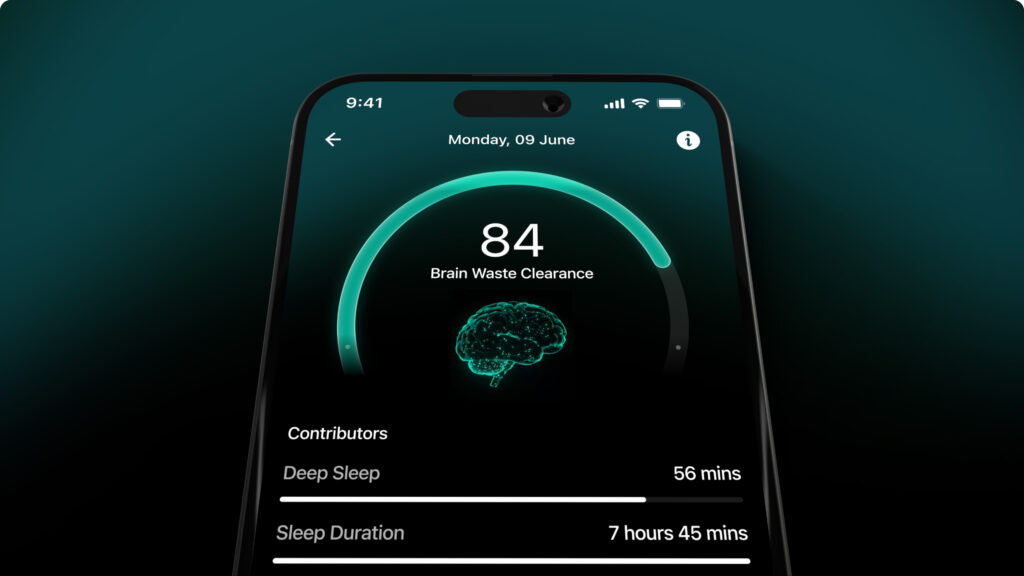Mind control is usually the stuff of science fiction and superhero movies, often involving sinister tech or alien influence. But in reality, humans are gradually learning how to influence brainwaves for less dramatic – and far more practical – reasons.
If you’ve ever found yourself overwhelmed in a stressful moment or struggling to focus under pressure, you may have wished for a way to shift your mental state on command.
While we can’t “control” the brain like flipping a switch, certain external cues – like sound – may help guide brain activity toward more desirable states. One emerging approach explores how sound frequencies can influence brainwave patterns. Here’s how it works.
This article was first published in 2021. It was reviewed for accuracy and updated in July 2025.
Highlights
- Neurofeedback is an alternative therapy in which brainwaves are gently influenced through auditory or visual stimuli, such as music or visual patterns, to help guide the brain into different states.
- Neuro-sound is a subset of neurofeedback that uses auditory inputs, such as music, binaural beats, or verbal affirmations, to influence brainwave patterns in specific ways.
- This approach is being explored for its potential to support brain health, learning, and cognition, among other possible benefits.
Brainwaves and how they work

The brain is made up of specialized cells called neurons. Neurons constantly interact with each other to coordinate behavior, emotions, and thought through electrical activity, which can be measured using electroencephalography (EEG).
By placing sensors on the scalp, researchers can record this activity and map it as brainwaves. These patterns vary depending on the task or state – for example, a resting brainwave pattern looks different from one observed during focused attention.
Brainwaves are categorized by frequency, or cycles per second, measured in hertz (Hz). The five most commonly recognized bands are:
- Delta (1–3 Hz) – Slowest frequency, highest amplitude. Associated with deep sleep.
- Theta (4–7 Hz) – Linked to relaxed, meditative, or dreamlike states. Often seen during the transition between sleep and wakefulness.
- Alpha (8–12 Hz) – Present during calm wakefulness or quiet reflection. Often observed when eyes are closed and the mind is at ease.
- Beta (13–38 Hz) – Faster waves associated with concentration, alertness, and mental activity.
- Gamma (39–42 Hz) – High-frequency waves associated with higher-level perception and consciousness.
Most people aren’t aware of their brainwave state in real time, and we can’t directly control it. However, research suggests that with consistent external inputs, such as auditory cues, brainwaves can be influenced in specific directions. This process is known as neurofeedback.
Neurofeedback and neuro-sound

Neurofeedback is a non-invasive approach that uses sensory input – often visual or auditory – to help a person become more aware of and influence their brainwave patterns.
It doesn’t involve medication, and some evidence suggests it may support improvements in attention, mood, memory, sleep, and stress management. While it’s still considered alternative and under investigation, several case studies and small-scale trials have shown promise.
Neuro-sound refers to using sound specifically, including music, binaural beats, or affirmations, to influence brainwave activity.
While this field is relatively new in modern neuroscience, the concept of using sound and rhythm for mental and physical well-being is not. Practices such as Native American drumming or Gregorian chants reflect a long-standing belief that rhythm and vibration can alter states of mind.
Neuro-sound builds on this tradition with modern tools and brainwave data to explore how specific frequencies might entrain certain mental states.
Binaural beats

One tool gaining attention in neuro-sound is the use of binaural beats – a phenomenon first theorized in 1839 by physicist Heinrich Wilhelm Dove and later studied by Dr Gerald Oster in 1973.
Oster’s research found that some individuals with neurological conditions were unable to perceive binaural beats, prompting interest in their diagnostic potential.
The idea is simple: when two slightly different frequencies are played in each ear, for example, 200 Hz in one and 210 Hz in the other, the brain perceives a third tone at the difference between them (10 Hz in this case). This 10 Hz rhythm falls in the alpha range, associated with relaxation. This auditory illusion is known as brainwave entrainment.
Because different brainwave states are associated with different mental or emotional functions, researchers and users have explored binaural beats for a wide range of outcomes – from relaxation and sleep to focus, creativity, and pain modulation. However, while some early studies and anecdotal evidence are promising, large-scale clinical trials are still limited.
Research by Dr Suzanne Evans Morris has explored how different frequencies might shift brainwave patterns and support various cognitive states.
Likewise, experiments by Dr Margaret Patterson and Dr Ifor Capel suggest that different frequencies may influence the production of neurotransmitters. For instance, 10 Hz stimulation (in the alpha zone) was linked to increased serotonin, a chemical often associated with mood and relaxation, while 4 Hz stimulation was associated with catecholamines, involved in attention and memory.
While these findings are preliminary, they support the hypothesis that auditory stimuli can interact with the brain’s frequency-based communication system. In simple terms, the brain “speaks” in frequency, and sound may provide a way to gently influence its rhythms.
How can people use neuro-sound
Neurofeedback and neuro-sound are being explored for their potential applications in areas such as stress reduction, pain relief, learning, memory support and sleep enhancement. Some practitioners also suggest benefits in managing cognitive decline, addiction, or mental fatigue, though these uses are still under scientific review and should not replace medical treatment.
For example:
- Alpha frequencies may support relaxation and mood regulation. Some studies – including work by Bulgarian psychiatrist Dr Georgi Lozanov – suggest that subjects in an alpha state showed improved learning and memory retention. His approach, known as Suggestopedia, was developed around the idea that relaxed brain states (notably alpha) could enhance suggestibility, learning speed, and memory.
- Theta waves may enhance internal reflection, meditative states or communication between brain hemispheres. Research such as the 2022 study by Inlow et al., “Theta and Alpha Oscillations in the Brain During Creative Ideation,” suggests a role for theta activity in creativity and memory encoding. Theta rhythms are also commonly observed during meditation.
- Delta frequencies are associated with deep, slow-wave sleep. Some users report that binaural beats in the delta range help initiate sleep or improve relaxation. A 2021 randomized trial by García-Argibay et al., published in Psychological Research, found that delta-range binaural beats modestly improved sleep onset latency in certain individuals. Unlike pharmaceutical sleep aids, neuro-sound approaches are non-invasive and do not suppress natural neurotransmitter production.
It’s important to note that individual responses vary. While some people report benefits with consistent use of neuro-sound tools, others may not notice significant effects. And while the field is gaining interest, more rigorous, peer-reviewed research is needed before making strong clinical claims.
How to get started with binaural beats
If you’re curious about exploring binaural beats, the good news is that it’s easy to try and requires minimal equipment. That said, getting it right matters – otherwise, you may hear the sounds but miss the potential effects.
1. Use stereo headphones – not speakers
Binaural beats rely on the brain detecting the difference between two slightly offset frequencies played separately in each ear. Standard headphones work fine – just make sure they’re stereo, not mono. Using speakers will cancel out the effect entirely.
2. Pick your frequency range based on your goal
Binaural beats are associated with different brainwave bands:
| Goal | Frequency | Brainwave Type |
|---|---|---|
| Deep sleep | 1–4 Hz | Delta |
| Meditation / creativity | 4–8 Hz | Theta |
| Calm focus | 8–12 Hz | Alpha |
| Alert thinking | 13–30 Hz | Beta |
Start with alpha (8–12 Hz) if you’re looking for a gentle intro – it’s often associated with relaxed but focused states.
3. Choose reputable sources
There’s a lot of low-quality audio out there. Look for:
- Clear labeling of frequencies (e.g., “200 Hz left ear / 210 Hz right ear”)
- Minimal background noise or distractions
- Credible apps (e.g., Brain.fm, Endel, Insight Timer) or direct downloads from known sound therapy providers
4. Set your environment
Use in a quiet space with minimal distractions. Sit or lie down, close your eyes if helpful, and allow 10–20 minutes for your brain to settle into the experience. For sleep, use a sleep timer to avoid overnight looping.
5. Start small and observe
Everyone responds differently. Try a few sessions across different frequency ranges to see how you feel. Some users report greater clarity, calm, or sleep ease – others may feel little to no effect.
Conclusion
Neurofeedback is a non-invasive method that uses sensory cues to help influence brainwave states. Neuro-sound – a form of auditory neurofeedback – explores how music, tones, and rhythm may guide the brain toward states associated with focus, calm, creativity, or sleep.
While this is not mind control in the sci-fi sense, learning to recognize and support certain brainwave states may allow for greater adaptability, resilience, and mental clarity. As with any tool, the key is to be informed – understand the frequency you’re using, pay attention to how it affects you, and integrate it with other healthy habits.
Disclaimer: The contents of this article are for general information and educational purposes only. It neither provides any medical advice nor intends to substitute professional medical opinion on the treatment, diagnosis, prevention or alleviation of any disease, disorder or disability. Always consult with your doctor or qualified healthcare professional about your health condition and/or concerns and before undertaking a new health care regimen including making any dietary or lifestyle changes.
References








